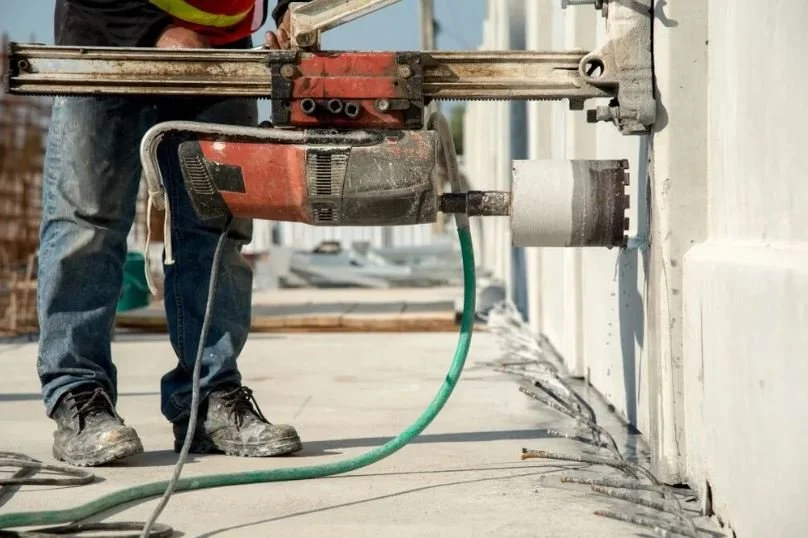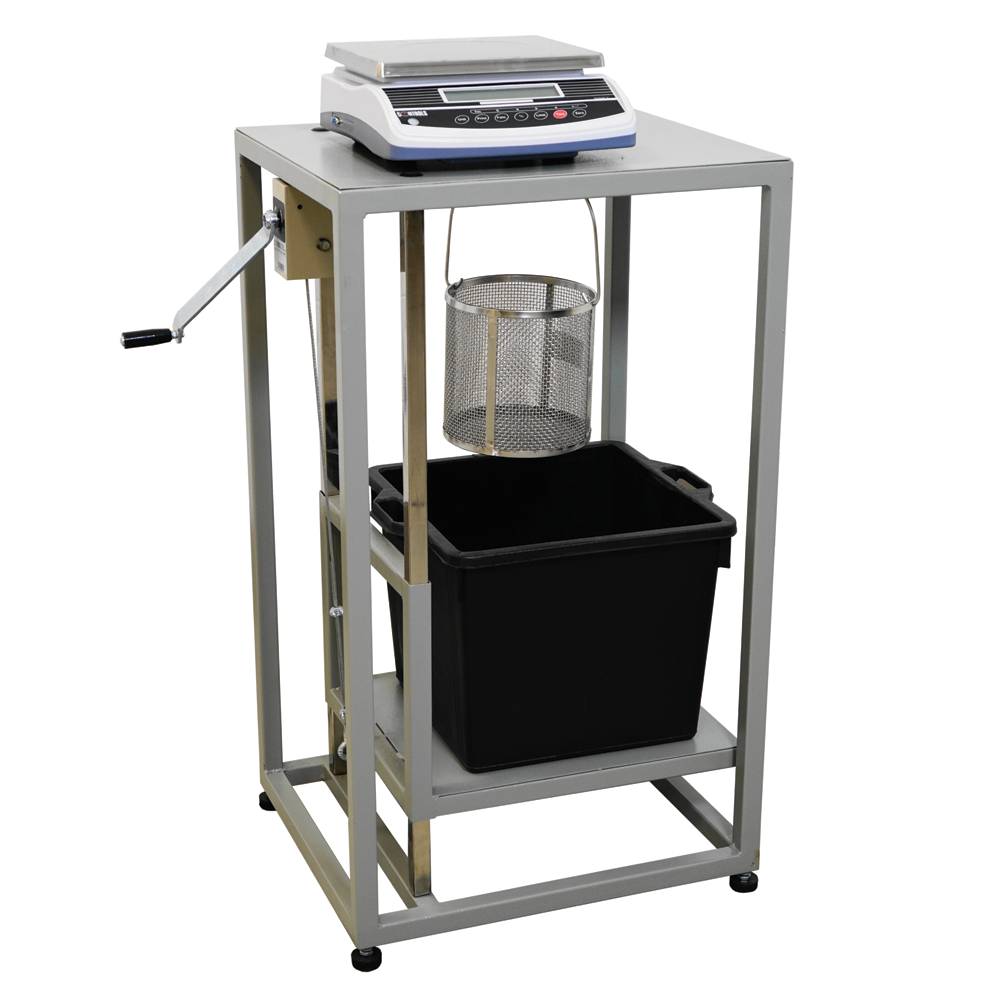Our Commercial Services
Ensure your construction project is managed with exceptional precision and expertise by securing an appointment with our skilled team today. Our professionals are committed to providing premier services tailored to meet your unique requirements.
Windsor Probe Testing: A Comprehensive Overview
Windsor Probe testing is a non-destructive method used to measure the compressive strength of concrete. This test is particularly valuable for assessing the structural integrity of existing concrete structures without causing significant damage.
How It Works
The test involves driving a probe into the concrete surface using a powder-actuated gun. The depth of penetration of the probe is measured, which correlates with the concrete's compressive strength. The key components of the test include:
Hardened alloy steel probes
Loaded cartridges
Powder-actuated gun
Key Features
Non-destructive: Does not significantly damage the concrete.
Accurate: Provides reliable data on compressive strength.
Versatile: Can be used on both fresh and mature concrete.
Efficient: Quick and economical method.
Applications
Structural analysis: Helps in evaluating the load-bearing capacity of structures.
Renovation projects: Essential for assessing older buildings where documentation may be missing.
Quality control: Ensures the concrete used in construction meets required standards.
Standards and Accuracy
The Windsor Probe test is conducted in accordance with ASTM C803 standards, ensuring high accuracy and reliability. It can measure compressive strengths up to 17,000 psi (110 MPa).
Advantages
Non-destructive: Minimal damage to the structure.
Quick results: Provides immediate data on concrete strength.
Cost-effective: Economical compared to other testing methods.
Limitations
Surface condition: The accuracy can be affected by the surface condition of the concrete.
Carbonation: Can lead to inaccurately high test values.
Conclusion
Windsor Probe testing is a valuable tool for engineers and construction professionals, providing essential data on the compressive strength of concrete. Its non-destructive nature and quick results make it an ideal choice for a variety of applications.
Concrete Coring: A Comprehensive Overview
Concrete coring is a precise and specialized technique used to remove cylindrical sections of concrete from solid surfaces. This method is essential for various applications, such as testing the structural integrity of concrete, creating pathways for utility installations, or removing specific areas of damaged material.
How It Works
Concrete coring involves using a drill rig and a core drill, which is a steel tube with a hollow, cylindrical drill bit (usually made from carbide or diamond) attached to the end. The process includes:
Drill rig stabilization: Anchoring the rig to the ground or surface.
Drilling: The core drill cuts through the concrete, creating a cylindrical hole.
Cooling: Water is fed across the hole to reduce heat and friction, creating a slurry.
Key Features
Precise: Allows for accurate removal of concrete sections.
Versatile: Can be used on walls, floors, and ceilings.
Efficient: Quick and effective method for creating openings.
Applications
Utility installations: Creating pathways for pipes, electrical wiring, and communication lines.
Structural testing: Extracting samples for analysis to assess concrete quality.
Renovation projects: Removing specific areas of damaged concrete.
Advantages
Minimal damage: Does not compromise the structural integrity of the remaining concrete.
Quiet operation: Relatively quiet with minimal percussion.
Dust control: Limited dust spread during the drilling process.
Limitations
Surface condition: The accuracy can be affected by the surface condition of the concrete.
Rebar and utilities: Careful planning is required to avoid hitting rebar or existing utilities.
Conclusion
Concrete coring is a valuable technique for construction and renovation projects, providing precise and efficient solutions for creating openings in concrete structures. Its versatility and minimal impact on structural integrity make it an essential tool for engineers and construction professionals.
Concrete GPR Scanning: A Comprehensive Overview
Concrete GPR scanning is a non-destructive method used to detect and locate embedded objects within concrete structures. This technique is essential for ensuring safety and accuracy in construction and renovation projects.
How It Works
Ground Penetrating Radar (GPR) scanning involves sending electromagnetic waves into the concrete surface. These waves travel through the concrete and reflect back when they encounter embedded objects or changes in material properties. The reflected signals are then analyzed to create a detailed image of the subsurface.
Key Features
Non-destructive: Does not damage the concrete structure.
Accurate: Provides precise location of embedded objects.
Versatile: Can be used on walls, floors, and ceilings.
Efficient: Quick and effective method for scanning concrete.
Applications
Utility detection: Locating pipes, electrical conduits, and communication lines.
Structural analysis: Identifying rebar, post-tension cables, and voids.
Renovation projects: Ensuring safe drilling, cutting, and coring operations.
Advantages
Safety: Prevents damage to embedded utilities and structural elements.
Cost-effective: Reduces the risk of costly repairs and project delays.
Detailed imaging: Provides clear and accurate subsurface images.
Limitations
Surface condition: Accuracy can be affected by the surface condition of the concrete.
Penetration depth: Limited penetration depth in densely reinforced concrete.
Conclusion
Concrete GPR scanning is a valuable tool for construction and renovation projects, providing essential data on the location of embedded objects within concrete structures. Its non-destructive nature and detailed imaging capabilities make it an ideal choice for ensuring safety and accuracy in various applications.
Asphalt Coring: A Comprehensive Overview
Asphalt coring is a precise technique used to extract cylindrical samples from asphalt pavements. This method is essential for assessing the quality and compliance of asphalt materials in construction projects.
How It Works
Asphalt coring involves using a core drill, which is a steel tube with a hollow, cylindrical drill bit (usually made from carbide or diamond) attached to the end. The process includes:
Drill rig stabilization: Anchoring the rig to the ground or surface.
Drilling: The core drill cuts through the asphalt, creating a cylindrical hole.
Cooling: Water is fed across the hole to reduce heat and friction, creating a slurry.
Key Features
Precise: Allows for accurate removal of asphalt sections.
Versatile: Can be used on roads, highways, and parking lots.
Efficient: Quick and effective method for creating openings.
Applications
Quality control: Assessing the density, thickness, and compaction of asphalt layers.
Structural testing: Extracting samples for analysis to ensure compliance with project specifications.
Renovation projects: Removing specific areas of damaged asphalt.
Advantages
Minimal damage: Does not compromise the structural integrity of the remaining asphalt.
Quick results: Provides immediate data on asphalt quality.
Cost-effective: Economical compared to other testing methods.
Limitations
Surface condition: Accuracy can be affected by the surface condition of the asphalt.
Temperature: Coring should be done when the asphalt has cooled to avoid deformation of the cores.
Conclusion
Asphalt coring is a valuable technique for construction and renovation projects, providing precise and efficient solutions for assessing the quality of asphalt pavements. Its versatility and minimal impact on structural integrity make it an essential tool for engineers and construction professionals.
Asphalt Bulk Specific Gravity Testing: A Comprehensive Overview
Asphalt Bulk Specific Gravity Testing is a method used to determine the specific gravity of compacted asphalt mixtures. This test is essential for assessing the density and quality of asphalt in construction projects.
How It Works
The test involves measuring the weight of an asphalt sample under three different conditions:
Dry: No water in the sample.
Saturated Surface Dry (SSD): Water fills the air voids in the sample, but the surface is dry.
Submerged in water: The sample is weighed underwater.
Using these measurements, the bulk specific gravity is calculated by determining the ratio of the sample's weight to the weight of an equal volume of water.
Key Features
Accurate: Provides precise measurements of asphalt density.
Versatile: Applicable to various types of asphalt mixtures.
Efficient: Quick and effective method for quality control.
Applications
Quality control: Ensuring the asphalt meets project specifications.
Mix design: Calculating air voids, voids in mineral aggregate (VMA), and voids filled with asphalt (VFA).
Structural analysis: Assessing the compaction and density of asphalt pavements.
Advantages
Reliable results: Provides consistent and accurate data.
Cost-effective: Economical compared to other testing methods.
Standardized: Conducted in accordance with ASTM and AASHTO standards.
Limitations
Sample condition: Accuracy can be affected by the sample's condition, such as the presence of open or interconnecting voids.
Absorption: Samples that absorb more than 2% of water by volume may not be suitable for this test.
Conclusion
Asphalt Bulk Specific Gravity Testing is a valuable tool for construction and renovation projects, providing essential data on the density and quality of asphalt mixtures. Its accuracy and efficiency make it an ideal choice for ensuring compliance with project specifications and maintaining high standards in asphalt paving.
Asphalt Field Testing: A Comprehensive Overview
Asphalt field testing is a crucial process used to evaluate the quality and performance of asphalt pavements during and after construction. This testing ensures that the asphalt meets the required specifications and standards for durability and safety.
How It Works
Field testing involves various methods to assess different properties of the asphalt. Common tests include:
Density Testing: Using nuclear density gauges or core samples to measure the compaction of the asphalt.
Temperature Monitoring: Ensuring the asphalt is laid at the correct temperature to achieve optimal compaction and bonding.
Surface Smoothness: Using straightedges or profilographs to measure the smoothness of the pavement.
Moisture Content: Checking for the presence of moisture in the asphalt mix, which can affect compaction and durability.
Key Features
On-site testing: Conducted directly at the construction site.
Real-time results: Provides immediate feedback on asphalt quality.
Comprehensive: Covers various aspects of asphalt performance.
Applications
Quality control: Ensuring the asphalt meets project specifications.
Compliance: Verifying adherence to local and national standards.
Performance assessment: Evaluating the long-term durability and safety of the pavement.
Advantages
Immediate feedback: Allows for quick adjustments during construction.
Cost-effective: Reduces the risk of costly repairs and rework.
Enhanced safety: Ensures the pavement is safe for use.
Limitations
Environmental factors: Weather conditions can affect test results.
Equipment calibration: Requires regular calibration to ensure accuracy.
Conclusion
Asphalt field testing is an essential part of the construction process, providing valuable data on the quality and performance of asphalt pavements. Its real-time results and comprehensive coverage make it a vital tool for ensuring the success of construction projects.
Contact us
Interested in working together? Fill out some info and we will be in touch shortly. We can’t wait to hear from you!



